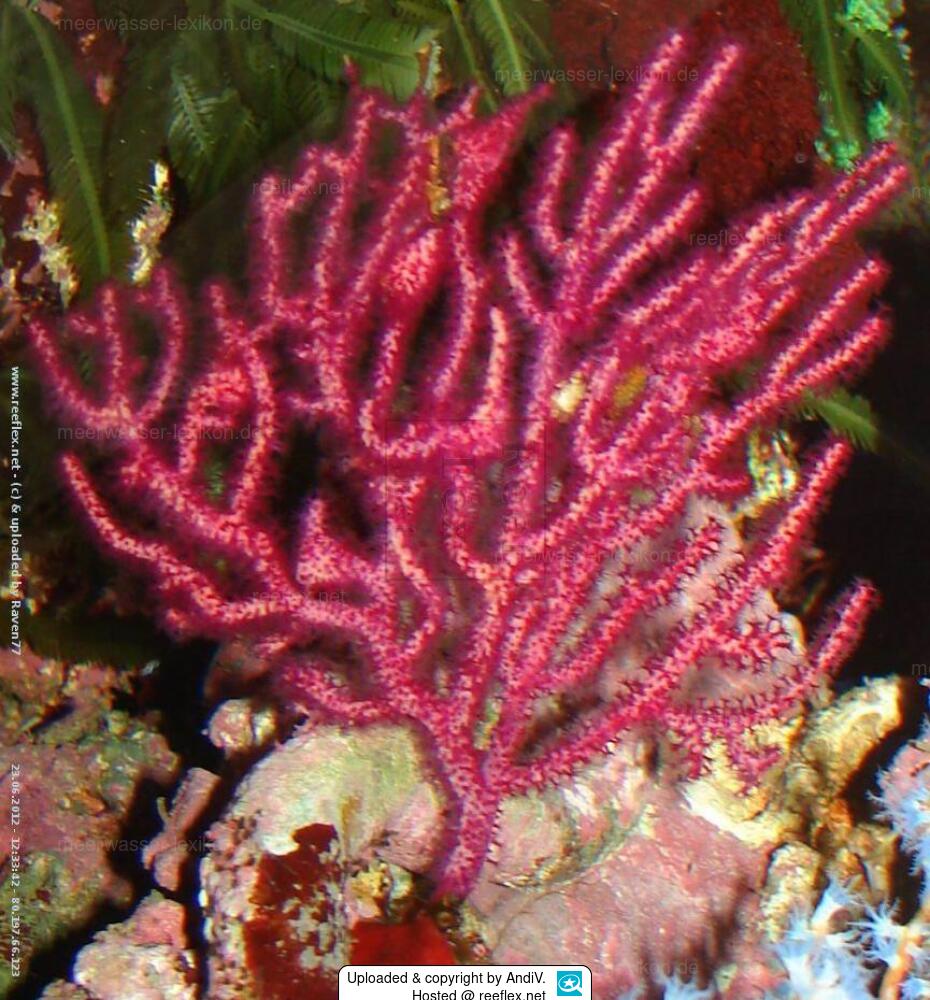Info
Thesea nivea Deichmann, 1936
Comes from the family Plexauridae
Occurrence: Atlantic region (North - South Carolina) and Caribbean in 25 - 450 m depth.
Size: about up to 50 cm
Growth habit: Branches are more or less in a plane with thin branches arching upward, sometimes with an abrupt 90 degree angle.
Colonies are reddish purple, with dark red to purple polyps, which may have white centers.
Colorless sclerites are on the surface of the branches.
Polyps are also visible on the trunk and at the base.
Branches are 3-4 mm in diameter. The tips on some branches are slightly thickened.
Some colonies have a bushy appearance and deviate from the typical fan-like growth habit.
These colonies may also have thicker branches up to 5 mm in diameter.
Must be fed and should be more difficult to keep for this reason!
Comes from the family Plexauridae
Occurrence: Atlantic region (North - South Carolina) and Caribbean in 25 - 450 m depth.
Size: about up to 50 cm
Growth habit: Branches are more or less in a plane with thin branches arching upward, sometimes with an abrupt 90 degree angle.
Colonies are reddish purple, with dark red to purple polyps, which may have white centers.
Colorless sclerites are on the surface of the branches.
Polyps are also visible on the trunk and at the base.
Branches are 3-4 mm in diameter. The tips on some branches are slightly thickened.
Some colonies have a bushy appearance and deviate from the typical fan-like growth habit.
These colonies may also have thicker branches up to 5 mm in diameter.
Must be fed and should be more difficult to keep for this reason!







 AndiV
AndiV












